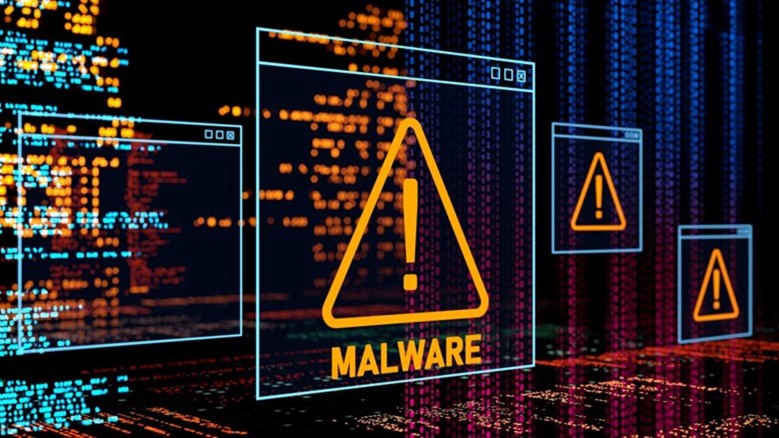
Introduction
In an increasingly interconnected world, the importance of cybersecurity cannot be overstated. Cyber threats are constantly evolving, and organisations and individuals alike must be proactive in safeguarding their digital assets. In this blog, we will explore various types of cyber threats, the distinction between cybersecurity and information security, the challenges faced, and the critical consequences of a cyber-attack. Moreover, we will provide you with a comprehensive cybersecurity checklist to help you enhance your defence against these threats.
Types of Cyber Threats
Malware: Malware, short for malicious software, refers to any software designed with malicious intent to disrupt, damage, or gain unauthorised access to computer systems. It encompasses a wide range of harmful programs, including viruses, worms, Trojans, and ransomware. Ransomware attacks have become a significant concern in recent years, posing a serious threat to individuals, businesses, and even entire countries.

In 2021, Australia experienced a significant surge in malware attacks, with a 15% increase compared to the previous year. Ransomware is a type of malware that encrypts files on a victim's computer or network, making them inaccessible until a ransom is paid to the attackers. This form of attack can have severe consequences, as it can lead to data loss, operational disruptions, financial losses, and reputational damage.
Backdoors: Hidden entry points in software or systems that are intentionally created or left undiscovered, backdoors pose a significant security threat. These secret access points provide unauthorised individuals with a means to bypass normal authentication mechanisms and gain control over networks or compromise sensitive data. Cybercriminals leverage backdoors to carry out malicious activities, such as unauthorised data exfiltration, remote control of systems, or launching further attacks from within compromised environments. Due to their hidden nature, backdoors can remain undetected for extended periods, allowing attackers to maintain persistent access and evade traditional security measures.
Formjacking: Formjacking is a nefarious technique employed by cybercriminals to steal sensitive information from unsuspecting users. This method involves injecting malicious code into legitimate websites, specifically targeting the forms where users enter their personal or financial details. By compromising the website's code, cybercriminals can secretly capture the information entered by users, such as credit card numbers, names, addresses, or other personally identifiable information. This stolen data is then exploited for various illicit purposes, including identity theft, financial fraud, or the sale of personal information on the dark web.
DDoS (Distributed Denial of Service): Distributed Denial of Service attacks are a malicious strategy aimed at overwhelming a target system or network by flooding it with a massive volume of incoming traffic. This flood of traffic, generated by multiple sources or computers, exhausts the resources of the target, rendering it inaccessible to legitimate users. DDoS attacks can disrupt the availability of websites, online services, or entire networks, causing significant financial losses, reputational damage, and inconvenience to businesses and individuals. The motives behind DDoS attacks vary, ranging from extortion attempts to ideological conflicts or acts of revenge. Advanced techniques, such as botnets, amplification attacks, or reflection attacks, are often employed to maximise the impact of DDoS assaults.
DNS (Domain Name System) Attacks: DNS attacks exploit vulnerabilities in the infrastructure of the Domain Name System, a fundamental component of the internet responsible for translating domain names into corresponding IP addresses. Cybercriminals leverage these weaknesses to redirect users to malicious websites or intercept communication between users and legitimate online services. DNS attacks can take various forms, including DNS cache poisoning, DNS hijacking, or DNS amplification attacks. By manipulating DNS records or compromising DNS servers, attackers can deceive users, redirecting them to phishing websites that mimic legitimate ones or intercepting their communications to harvest sensitive information. DNS attacks can have severe consequences, compromising the integrity, confidentiality, and availability of online services while eroding user trust in the internet infrastructure.
Cybersecurity vs Information Security
While the terms are often used interchangeably, there is a distinction between cybersecurity and information security. Cybersecurity primarily focuses on protecting digital systems, networks, and data from unauthorised access, while information security encompasses the broader protection of information, including physical records and intellectual property. Both are crucial aspects of maintaining the confidentiality, integrity, and availability of valuable assets.
Challenges of Cybersecurity
Rapidly evolving threats: Cybercriminals continually develop new techniques and exploit emerging technologies, posing significant challenges for organisations and individuals to stay ahead of the curve. The landscape of cybersecurity threats in Australia is constantly evolving, with hackers adapting their tactics to exploit vulnerabilities in computer systems, networks, and applications. This dynamic nature of cyber threats requires constant vigilance and proactive measures to protect sensitive information and digital assets from unauthorised access, data breaches, and other malicious activities.
Skills shortage: Australia is facing a significant shortage of cybersecurity professionals, with a projected shortfall of over 18,000 skilled workers by 2026, according to AustCyber, the Australian Cyber Security Growth Network. This shortage poses a critical challenge for organisations seeking to build effective cybersecurity teams and implement robust security measures. The scarcity of skilled cybersecurity professionals in the Australian workforce hampers the ability to identify and mitigate threats, respond to incidents, and establish robust security frameworks. Addressing this skills gap requires investment in education and training programs to build a pipeline of skilled cybersecurity experts who can protect critical infrastructure, safeguard sensitive data, and respond effectively to emerging threats.
Insider threats: Employees, contractors, or partners can inadvertently or intentionally compromise security measures, highlighting the importance of implementing robust access controls and monitoring mechanisms. Insider threats can manifest in various forms, such as unauthorized access to sensitive data, accidental exposure of confidential information, or deliberate sabotage of systems. Organizations in Australia need to implement stringent security protocols, including user access management, privileged account monitoring, and employee awareness programs, to mitigate the risks associated with insider threats. By establishing a culture of cybersecurity awareness and enforcing strict controls over user privileges and data access, organisations can better protect themselves against potential internal vulnerabilities and unauthorized activities that may compromise their systems and data.
Consequences of a Cyber Attack
The consequences of a cyber-attack can be severe, impacting organisations and individuals alike. In Australia, the average cost of a cyber-attack on a business reached AUD 3.35 million in 2021, a 9.8% increase from the previous year. These consequences include:
Financial losses: Cyber-attacks can result in significant financial losses for organisations. These losses can occur in various ways, such as theft of sensitive financial information, fraudulent transactions, ransom demands, legal liabilities, and disruptions to business operations. For example, in the case of a data breach, cybercriminals may gain access to customer payment card data, leading to unauthorized transactions and financial losses for both the customers and the organization. Additionally, if critical systems or infrastructure are compromised or disrupted, businesses may experience downtime, leading to lost revenue and additional costs for recovery and remediation.
Reputation damage: One of the most significant consequences of a cyber-attack is the potential damage to an organization's reputation. When customer data is breached or a cyber-attack is publicized, it erodes customer trust and confidence in the organization's ability to protect their information. This loss of trust can have long-lasting effects, resulting in a decline in customer loyalty, decreased sales, and potential legal actions. Furthermore, negative media coverage and public scrutiny can further tarnish an organization's reputation, making it challenging to regain the trust of customers, partners, and stakeholders.
Legal and regulatory implications: In today's regulatory landscape, organisations are increasingly held accountable for protecting sensitive data and complying with cybersecurity regulations. A cyber-attack that compromises customer data can expose an organization to legal and regulatory penalties, such as fines, sanctions, and lawsuits. Industries such as healthcare, finance, and government have specific cybersecurity requirements and standards that must be met. Non-compliance with these regulations not only leads to financial repercussions but also undermines an organization's credibility and standing within its industry.
Managing Cybersecurity
User education: Organizations should prioritize ongoing cybersecurity training and education for employees. Regularly educating employees about cybersecurity best practices helps raise awareness of potential threats, such as phishing attempts and social engineering tactics. Employees should be trained to recognize and report suspicious activities, use strong and unique passwords, exercise caution while accessing unfamiliar websites or downloading attachments, and follow established security protocols.
Application security: It is crucial to implement robust application security measures. This includes regularly updating and patching software to address known vulnerabilities, utilizing secure coding practices during application development, and conducting periodic vulnerability assessments and penetration testing to identify and mitigate potential security flaws. By proactively addressing application security, organisations can reduce the risk of successful cyber-attacks targeting their systems and applications.
Network security: Implementing strong network security measures is essential to protect against unauthorized access and data breaches. This includes deploying robust firewalls, intrusion detection and prevention systems, and secure Wi-Fi networks. Regular network audits and monitoring can help detect and prevent potential security breaches or suspicious activities. By maintaining a secure network infrastructure, organisations can minimize the risk of cyber-attacks and unauthorized access to their systems and data.
Leadership commitment: Effective cybersecurity management requires commitment and support from senior leadership. Establishing a culture of cybersecurity awareness and prioritizing investment in cybersecurity resources, processes, and technologies is crucial. Senior management should take an active role in setting cybersecurity policies, promoting a secure work environment, and ensuring that employees understand the importance of cybersecurity. By demonstrating a strong commitment to cybersecurity, organisations can foster a culture of vigilance and proactive risk management.
Password management: Encouraging the use of strong, unique passwords for all accounts is an important aspect of cybersecurity. Organizations should educate employees on password best practices, such as using a combination of uppercase and lowercase letters, numbers, and special characters. Implementing password complexity requirements and considering the use of multi-factor authentication can provide an extra layer of security. By promoting good password hygiene, organisations can reduce the risk of unauthorized access and protect sensitive data from being compromised.

Conclusion
As cyber threats continue to evolve, it is crucial to implement effective cybersecurity best practices to safeguard your digital world. By understanding the types of threats, differentiating between cybersecurity and information security, recognizing the challenges involved, and comprehending the consequences of a cyber-attack, individuals and organisations can take proactive steps to enhance their security posture.
Stay vigilant, educate yourself and your employees, and make cybersecurity a top priority in today's interconnected landscape. With Nexacu's cybersecurity courses, you can fortify your defenses and confidently navigate the ever-changing cybersecurity landscape. Our Certified in Cybersecurity one-day workshop is designed to provide participants with comprehensive insights into cybersecurity principles, best practices, and hands-on techniques. Through this course, you'll learn about the different types of cybersecurity, the evolving threat landscape, and how to develop a consolidated cybersecurity architecture to safeguard your digital world effectively.
Don't wait until it's too late - invest in your cybersecurity knowledge today and build a safer digital future.

 Australia
Australia New Zealand
New Zealand
 Singapore
Singapore
 Malaysia
Malaysia
 Philippines
Philippines
 Thailand
Thailand
 Indonesia
Indonesia
 phone
phone
 email
email
 enquiry
enquiry
























